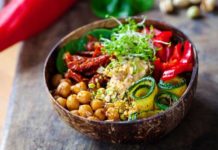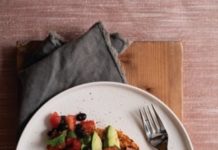
Follow a naturopathic doctor at the Ottawa Integrative Cancer Centre, as she takes you through her approach to patient care and research. Learn about naturopathic oncology through the eyes of a clinician and understand some of the day-to-day challenges of people going through treatment for cancer.
When facing a cancer diagnosis, people often pair natural therapies with their prescribed course of oncology treatments. Sadly, many do not share this choice with their oncology team, leaving patients to sift through an overwhelming amount of information alone. There is a different option.
As a naturopathic doctor (ND) with the Ottawa Integrative Cancer Centre (OICC), I accompany people with cancer from diagnosis through treatment and beyond. The goals of my work are as diverse as the patients who come in to my office.
Common concerns of my patients include managing treatment side effects, speeding healing and recovery, and minimizing factors that contribute to cancer growth. In this article, I explore the concerns of the real people that I work with and share the approaches that we use together.
Navigating integration
In my daily patient visits, I help patients to understand possible interactions between supplements and other treatments they may be receiving. I review which plants and nutrients may benefit treatment side effects and which pose a risk of interaction.
See the sidebar below for supplements that I often discuss with patients, along with a rationale for their use.
The foundations of health
While supplements often form part of my treatment plans, they must be viewed as add-ons to the foundations of a healthy lifestyle. In my view, good diet, exercise, sleep, and mental health practices must also be assured. I spend part of every visit reviewing these aspects with my patients.
For some people, food choices are a source of enormous stress. Patients fear making the “wrong” choice and inadvertently fuelling cancer growth. Others first see me in the midst of radical but unsustainable regimens, seeking guidance about whether they really need to give up coffee. Still others struggle with treatment-related digestive effects, trying to nourish themselves with the few mouthfuls they can keep down.
Make nutritious diet choices
I most often propose a low-carb Mediterranean-style diet. Sugar-free, antioxidant-rich coffee is welcomed, but alcohol is avoided (see sidebar for statistics linking alcohol to cancer risk). Recommendations are tailored to each person’s concerns, but this approach lets me provide evidence-informed, nutritious, flexible recommendations to my patients.
Move through cancer
Along with a healthy diet, movement and exercise are essential at any stage of diagnosis or treatment. Before surgery, I encourage exercise to optimize physical function and solidly benefit their recovery from surgery.
Gentle exercise during radiation and chemotherapy elevates energy levels, emotional well-being, and quality of life. For patients who will receive lifelong treatment, this is a particularly important tool.
In the context of cancer prevention, I place a heavy emphasis upon regular exercise. In nonsmokers, this is the single most powerful way of reducing ongoing cancer risk (see sidebar below). A minimum of 150 weekly minutes of moderate to intense exercise can help achieve this goal.
Sleep for healing
Sleep issues are common among my patients. Some people have had lifelong issues with sleep, while others find their rest newly disturbed by the shock of diagnosis. Drug side effects or pain from cancer or surgery render sleep ever more elusive. Furthermore, sleep dysregulation may be a factor contributing to cancer risk.
Magnesium and melatonin can calm the mind, relieve muscle pain, and induce restorative sleep to promote healing (see the supplements sidebar on page 76). I also teach patients breathing techniques and yoga postures to encourage activity of the calming parasympathetic nervous system.
Support emotional health
I hold the mental/emotional health of my patients in high regard. Emotional shock is common, a fact that translates into higher rates of post-traumatic stress disorder (PTSD) after cancer diagnosis.
Others feel betrayed by their bodies or let down by their lifetime commitment to good health habits. I explore some of these questions with patients but also suggest further support with psychiatrists, psychologists, or social workers. Some services may be covered by personal or regional health plans.
I have the good fortune to work directly with yoga therapists, a hypnotherapist, and other counsellors who provide alternative counselling options to patients. In addition, hands-on therapies ranging from reflexology to massage to osteopathy can be exquisitely calming to the busy mind while providing a safe, therapeutic space for emotional exploration.
To see a snapshot of a patient’s experience in my practice, please see “Cathy’s story” (below).
The world of naturopathic oncology is multifaceted and complex, but endlessly fascinating and rewarding. I feel privileged to accompany the patients that walk into my office every day.
Cathy’s story
In my 90-minute intake visit with Cathy, we discuss her recent biopsy for a lump in her breast. She is waiting anxiously for the results, and given her sister’s diagnosis last year, she fears the worst. Her health is otherwise excellent, but she wants to do everything she can to get through the surgery that she expects to need.
I follow the intake with a short physical exam and then provide my recommendations, which include daily flaxseed and cruciferous vegetable consumption, moderately intense daily exercise, and a referral to our yoga therapist. We agree to meet after she receives her biopsy results.
Two weeks later, Cathy is mentally preparing for her surgery—the cancer has been confirmed. She is scared, but the yoga practice is helping with her breathing and anxiety. In our 40-minute follow-up visit, I recommend a high-protein diet before and after surgery along with probiotics and vitamin D to reduce the risk of post-surgical infection.
A pre-surgical visit with our massage therapist will help relax her mind and body. We talk about supplements and intravenous therapies that could be supportive during chemotherapy, if this is required.
Cathy returns to my office a couple of weeks after her lumpectomy with good news: the cancer was caught early and she will not need the chemotherapy that her sister required. Her radiation treatments will start in the coming weeks.
I reiterate the need for daily exercise to help her energy levels and suggest a calendula-based cream to soothe her skin during radiation. She makes an appointment with our physiotherapist to support her range of motion after her surgery.
A quick check-in during the radiation shows that Cathy is tolerating her treatments very well, and we decide to reconvene a month later.
At her next visit, Cathy has completed radiation, and both she and her team are very happy with how well she got through the month of treatment. She is now on a hormone-blocking drug to prevent cancer recurrence, but is finding her sleep disturbed by hot flashes and sweats. I suggest melatonin to support her sleep and send her off to our acupuncturist for treatments to manage the hot flashes.
Three months later, Cathy is settling back into life post-treatment. She doesn’t feel ready to return to her high-stress job yet, and even hints at a career change. We discuss annual vitamin D tests and post-treatment goals, which include maintaining her regular exercise schedule, making time for food preparation if and when she returns to work, and continuing her yoga practice to help her sleep and stress levels. I continue to follow Cathy at six- to 12-month intervals to help keep her on track with her goals.
Managing treatment side effects
Nausea
- acupuncture or acupressure
- reflexology
- reiki
Pain
- massage
- physiotherapy
- yoga
- meditation
Lymphedema
- physiotherapy
- massage
- Fatigue
massage
- exercise
- physiotherapy
Depression and anxiety
- group or individual counselling
- yoga
- hypnotherapy
Sleep disturbance
- reflexology
- acupuncture
- yoga
An ounce of prevention
A 2012 study found that more than 40 percent of cancers are preventable.
| Factor | Percentage of cases linked to this factor |
| smoking | 15.70% |
| physical inactivity | 7.20% |
| being overweight | 4.30% |
| inadequate fruit/vegetable intake | 1.80% |
| alcohol use | 1.70% |
Groundbreaking research
In addition to daily clinical care, I am part of an exciting collaborative research study with the Ottawa Hospital.
The TPOISE (Thoracic Peri-Operative Integrative Surgical Care Evaluation) trial unites oncologists, surgeons, and NDs to provide fully integrated naturopathic care to patients in treatment for stomach, esophageal, and lung cancers. This study will not only shed more light on the role of naturopathic medicine in cancer care, but also foster relationships between NDs and oncologists. This care model is the way of the future!
Supplements during cancer treatment
These supplements are often considered in my treatment plans.
Vitamin D insufficiency is linked with cancer risk. Many Canadians have low levels.
Melatonin may help initiate and maintain sleep; it also provides possible anticancer action.
Ginger may be useful for nausea and can be taken as a tea, lozenge, tincture, or capsule.
Magnesium may reduce muscle cramps, anxiety, sleep disturbance, and constipation.
Intravenous vitamin C may be supportive of quality of life during treatment.
Fish oil may improve dry skin and cognitive function; it may also support cardiovascular health.
Glutamine may reduce neuropathy, diarrhea, and oral irritation.
Step it up
Flax is fine and soy is super!
Flax
- is associated with reduced risk of breast cancer
- provides fibre and reduces constipation, which both have an impact on cancer risk
Soy
- reduces recurrence of cancer and improves survival, especially hormone negative cancers
- is safe in hormone positive women
Aim for as-whole-as-possible soy foods such as
- edamame
- soy nuts
- tofu
- unsweetened soy milk






























